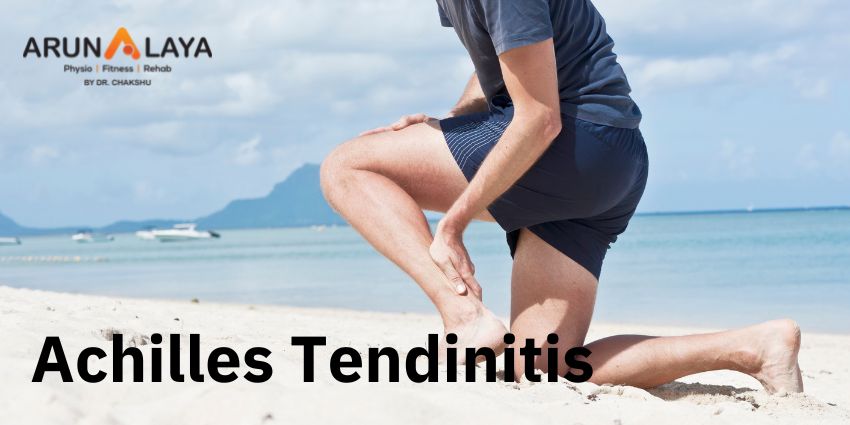Achilles Tendinitis
In Greek mythology, a hero named Achilles, as a child, was dipped in the waters of the River Styx by his mother, by which means he became invulnerable, except for the part of his heel by which she held him (the proverbial “Achilles’ heel”) making it his only one weakness.
Your Achilles tendon connects your heel bone to your calf. If it’s overly stressed, you can get Achilles tendinitis, the main cause of Achilles tendon pain. If untreated, it can lead to an Achilles tendon rupture.
What does tendonitis mean? Tendinitis is when a tendon becomes irritated or inflamed. Inflammation is the body’s response to injury or disease.
RISK:
Achilles tendon disorders are common sports injuries. People at high risk include those who:
• Play sports, especially sports that involve quick stops and starts.
• Run or dance.
• Have jobs that put stress on their feet and ankles, such as laborers.
• Participate in sports less frequently (weekend warriors)
People may also be at higher risk for Achilles tendinitis because of your anatomy (body shape and structure). These include people with
• Tight/weak calf muscles.
• Heel spur
• Flat feet
SYMPTOMS
• Heel pain and ankle pain.
• Stiffness or tenderness in the back of your heel
• Leg weakness.
• Swelling
• Discomfort standing on your toes
WHEN TO SEE A DOCTOR
If you experience persistent pain around the Achilles tendon, call your doctor. Seek immediate medical attention if the pain or disability is severe. You may have a torn (ruptured) Achilles tendon.
MANAGEMENT
Conservative treatment
RICE method:
• Rest: Avoid activities that stress your tendon and switch to low-impact activities, such as swimming
• Ice: 20 minutes throughout the day
• Compression: Put pressure on the tendon using a bandage wrap
• Elevation: Raise your foot on pillows so it’s above your heart to reduce swelling.
Patient education:
• Protect your tendon. Avoid walking up steep inclines or overstretching the tendon, such as by standing on a ladder rung.
• Wear supportive shoes. Don’t walk barefoot.
• Use splint at night to help the Achilles tendon stay stretched while you sleep.
• Taking NSAIDs like ibuprofen after contacting your doctor.
Pain management. Many pain-relief strategies may be implemented, such as applying ice to the area, putting the affected leg in a brace or therapeutic ultrasound. These strategies can reduce the need for pain medication.
Manual therapy. Hands on treatment techniques to mobilize your tissues improve their motion and function.
Gentle exercises. Your physiotherapist will teach you ROM exercises and very gentle stretching of your calf muscle and later strengthening exercises, massage, and running re-education to help you feel better and regain your strength. Loading of the tendon through exercise is beneficial for recovery.
Shockwave therapy, which uses strong sound waves to reduce pain and promote healing.
Muscle-strengthening exercises. An individualized, progressive, lower-extremity resistance program will help overcome any unwanted muscular imbalances in your foot.
Functional training. Based on your goals and functional demands, you will be trained to move your body safely.
SURGERY
If conservative treatments don’t work, surgery may be necessary to prevent an Achilles rupture. Your doctor may recommend a few options for Achilles tendon surgery based on how severe the condition is and where it’s located.
PREVENTION
To reduce the risk of Achilles tendinitis
• Gradually increase your exercise intensity and duration
• Avoid activities that place excessive stress on your tendons and never skip a good warm up
• Choose your shoes carefully and use arch supports if necessary.
• Stretch daily
• Strengthen your calf muscles
• Cross-train. Alternate high-impact activities, such as running and jumping, with low-impact activities, such as cycling and swimming.

